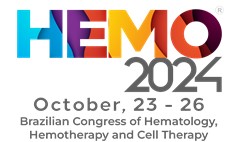
Cold Agglutinin Disease (CAD) is a form of Autoimmune Hemolytic Anemia (AIHA) caused by IgM antibodies binding to erythrocytes at low temperatures, leading to complement-mediated hemolysis. CAD can be primary (idiopathic) or secondary, often associated with lymphoproliferative disorders, infections, or autoimmune diseases. Waldenström’s Macroglobulinemia (WM), a rare B-cell malignancy characterized by IgM overproduction, is an uncommon but important cause of secondary CAD. This case highlights the diagnostic and therapeutic challenges of CAD in a patient with relapsed WM.
Case presentationA 66-year-old female was diagnosed with Waldenström’s Macroglobulinemia (WM) in 2012 based on a bone marrow biopsy. She initially received R-CHOP chemotherapy, achieving remission in 2015, followed by Autologous Stem Cell Transplantation (ASCT) in October 2015. After relapse in 2016, she was treated with bortezomib-rituximab followed by bortezomib monotherapy between 2016 and 2018. In October 2023, she started ibrutinib therapy for disease control. During routine blood tests in October 2023, hematologic discrepancies were noted: Hemoglobin (Hb): 7 g/L, Hematocrit (Hct): 13%, which corrected to Hb: 10.5 g/L and Hct: 31.2% after warming the sample to 37°C, raising suspicion for Cold Agglutinin Disease (CAD). Direct Coombs test was positive (1/16 IgM titer), confirming the diagnosis. Given the underlying lymphoproliferative disorder, the patient was started on rituximab therapy for CAD management while continuing ibrutinib for WM.
ConclusionThis case underscores the importance of considering CAD in patients with hematologic malignancies presenting with unexplained anemia and hemoglobin/hematocrit discrepancies. It highlights the necessity of warming blood samples in suspected cases, preventing misinterpretation of CBC results. Additionally, it demonstrates the crucial role of rituximab in managing CAD secondary to WM by targeting IgM-producing B-cells. Early recognition and treatment of secondary CAD in lymphoproliferative disorders can prevent complications and improve patient outcomes.






